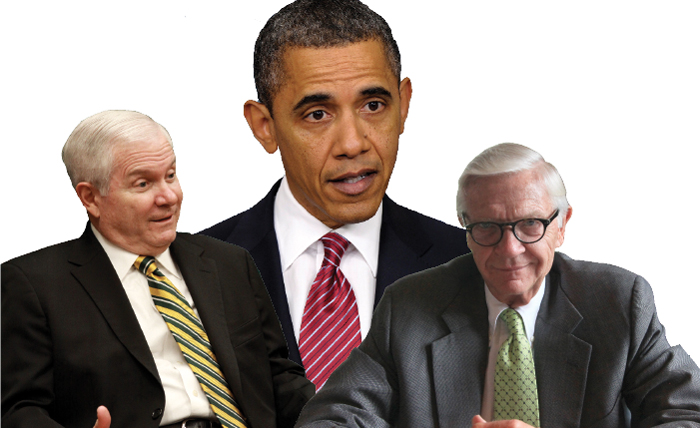President Barack Obama addressed the soaring costs of higher education and called upon Congress to require accreditors to factor in price and value when determining how federal aid is distributed in his State of the Union Speech Feb. 12.
“Taxpayers cannot continue to subsidize higher and higher costs of higher education,” Obama said. “Colleges must do their part to keep their costs down, and it’s our job to make sure they do.”
Just a few days before at the College of William and Mary’s Charter Day celebration, Chancellor Robert Gates ’65 took the issue of costly higher education even further by noting the trend of dwindling state financial support for public institutions like the College.
“Public Universities have gone from being state-supported to state-assisted to state-located,” Gates said.
The declining trajectory of state financial involvement is a major departure from the large-scale investment in higher education seen in the Cold War era, yet the trend of dwindling government support for public higher education is a phenomenon due largely in part to the inescapable drawbacks of the federal system.
Vice President of Communications and University Relations Brian Whitson indicates that the commonwealth’s inability to fund institutions of higher education are a result of the federal government’s deficiencies, to the extent that federal policies either speed up or slow down the overall economic recovery.
“Virginia is a state that will feel major impacts if the federal government moves to reduce spending significantly,” Whitson said in an email. “Lower federal spending means lower state tax revenues.”
Whitson highlighted the gravity of the possible government sequestration that Gates deemed as one of the largest financial challenges.
Whitson also noted that roughly one third of Virginia’s budget is funded by the federal government, meaning that any shift, up or down, can have a significant impact on public colleges and universities.
The question of how universities and colleges deal with the shifts infiltrated Gates’ speech.
“How [do we] alter this increasingly bleak landscape?” Gates said.
Gates’ reminded Charter Day attendees not to bet on the government for help. Instead, he placed responsibility on the public colleges and universities to find cost-cutting methods.
College President Taylor Reveley agreed, noting the sharp decline in Virginia’s funding of the College from 43 percent of the operating budget 30 years ago to 13 percent today. According to Reveley, the College has a greater responsibility to reach out and make money on its own.
“The bottom line is, in terms of the operating budget, the era of state support as a major factor of the budget seems to be over, at least in Va. and I don’t see it coming back,” Reveley said. “Our money therefore has to come from tuition, from annual giving, from the yield on our endowment, from foundation grants, from everywhere we can find it, but we can’t depend on the state.”
Reveley also differentiates the College from other public universities, pointing out its similarities to private institutions as an advantage for revenue creation.
“Our peers are private schools,” Reveley said. “Private schools are enormously dependent on philanthropy. [The College] has that, in addition to a supportive alumni base that’s willing to give back, much like private schools also.”
But the College has also had to turn to other sources of revenue, including tuition increases. The College’s ability to attract out-of-state students and charge them private-school prices has therefore become a source of major funding but is limited due to restrictions on the number of out-of-state students placed on the College by the state.
“The four-year colleges in Virginia have very little capacity to draw on out-of-state students and can’t charge too much,” Reveley said. “In our case as well as U.Va., we get armies of out-of-state students and unfortunately we have to charge them a lot more money than our in-state kids. They are utterly crucial as a source of earned income that isn’t available to most Virginia colleges.”
For many out-of-state students, the idea that the College relies on them financially is unsettling.
Kieran Ryan ’15, who is originally from Washington State, expresses uncertainty with his decision of coming to the College.
“I came [to the College] because I knew it was a good school, and really hard to get into,” Ryan said. “At the time I guess I underestimated how much I’d eventually have to pay, but now the money I’m going to owe from loans is becoming a very real, scary thing. Sometimes I doubt whether I should have bothered going out-of-state for a public school.”
In light of the president’s national call for better, more affordable higher education, the College is not the only school resorting to other methods of raising revenue, making the plane even for students to choose based on preference rather than financial ability.
“In the end, I know I won’t ever transfer because [the College] is small and smart,” Ryan said. “And right now, that’s what matters most.”

